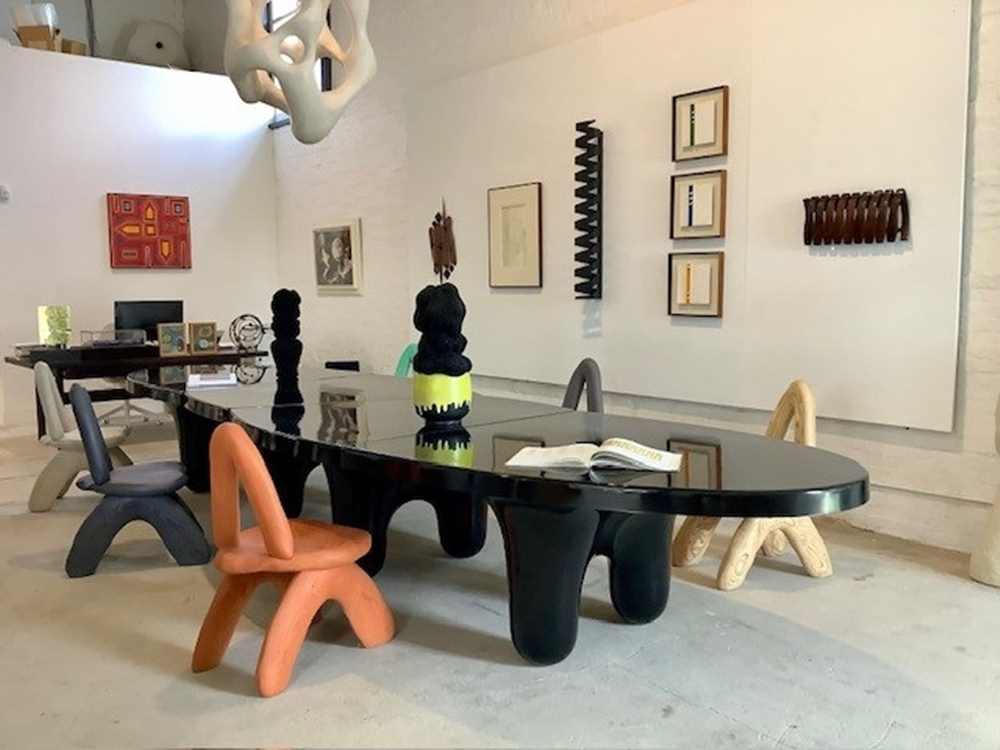Sacred Geometries: Abstraction and Brazilian Modernism, Works by Roberto Burle Marx, Joaquim Tenreiro, and Rubem Valentim, 1960-1980
April 15th - June 15th, 2024
Intended to coincide with and amplify the current landmark show at the Museum of Modern Art in New York, "Crafting Modernity: Design in Latin America, 1940-1980", the exhibition examines the work of three seminal mid-century Brazilian artists.
Brazil in the middle of the 20th century was a hot bed of modernist creative innovation. Architects such as Oscar Niemeyer and Lina Bo Bardi were making architecture of singular vision and style.
Add to this vibrant scene, the evocative work of Roberto Burle Marx, Joaquim Tenreiro and Rubem Valentim. Three artists with a polymathic approach to art making.
One of the most influential landscape artists of the 20th century, Roberto Burle Marx is best known for his iconic seaside paving design on Rio de Janeiro's Copacabana Beach. His work encompasses an enormous range of artistic forms and styles: Burle Marx was a painter and sculptor, a designer of textiles and jewelry, as well as ceramics and stained glass.
"Burle Marx's art inhabits a rare space between the rational and the lyrical," according to a 2016 exhibition on Burle Marx at The Jewish Museum in New York.
Equally diverse in his creative and artistic output, is the important mid-century Brazilian artist and furniture designer, Joaquim Tenreiro. He Studied painting and drawing but turned to wood, creating his furniture designs for which he is celebrated and collected.
By the end of the 1960's, he gave up furniture design and returned to painting and sculpture. His rare and sought after "Fitas", are wall sculptures referencing the fita, or ribbon, in Brazilian culture, in which ribbons were worn around the neck carrying religious medals or amulets intended to bring good luck. This interest of Tenreiro's grew out of his designs for a synagogue and utilized his fabrication virtuosity in wood.
Joaquim Tenreiro and the Afro-Brazilian artist, Rubem Valentim intersect as distinctive yet synergistic voices in the Brazilian aesthetic landscape of the 1960's and 70's. Both originally figurative painters in the 1940's and 50's, they enter the 1960's as important voices of the concrete art movement in Brazil.
Sculpture and reliefs are strong elements of their work in this period-Valentim with his "sacred geometry" and Tenreiro with his artistic geometry, legacy of years of remarkable furniture making.
As Brazil embraces the new era of modernism in the 1970's both artists work is often juxtaposed. Oscar Niemeyer's Itamaraty Palace is considered the jewel of Brasilia's architecture and Brazil's most representative modernist building. It is no coincidence that the main interior spaces are by Valentim and Tenreiro, in turn cementing their enduring legacy and the growing recognition of the art of mid-century Brazil.
